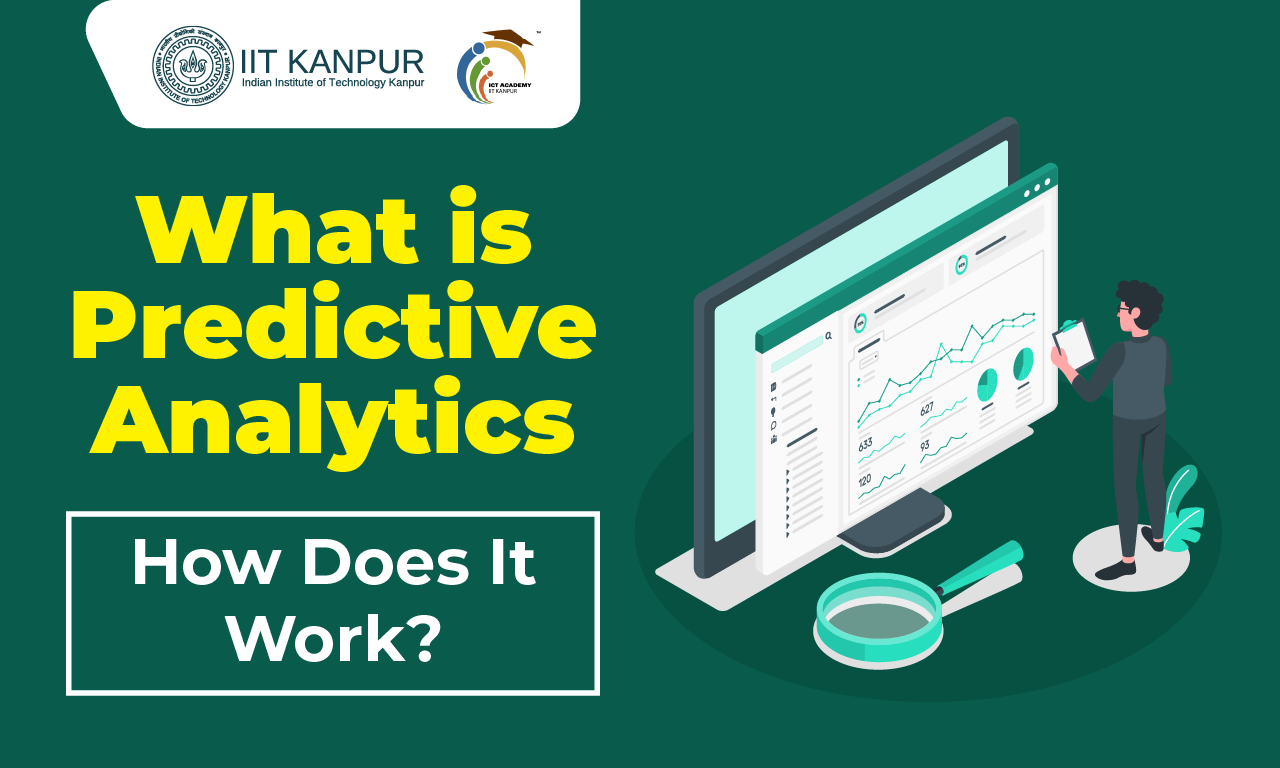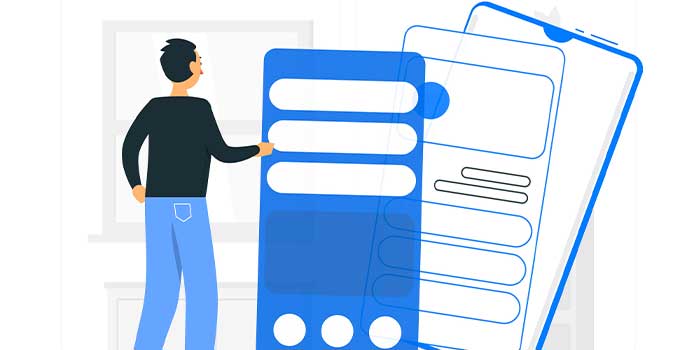What is Predictive Analytics, and How Does it Work?

Predictive analytics uses data from the past and some statistical models to predict future outcomes and trends. It’s used by data scientists, investors, businesses, retailers, and various other professionals to generate insights and make informed decisions on subjects like understanding customer behavior, forecasting market trends, and devising strategies with more informed decisions by minimizing associated risks.
There are four main types of data analysis: descriptive analytics focuses on the summary of past data in descriptive analysis, whereas in diagnostic analytics, the reason behind an event is identified. Data scientists predict future outcomes using predictive analytics. Prescriptive analysis recommends what action should be taken based on the prediction.
In this blog, we will learn about the predictive analytics’ meaning. Later, we’ll attempt to understand its definition, working principles, and real-world applications.
Best Predictive Analytics Course for Decision Making – Enroll Today!!
Understanding the Basics of Predictive Analytics
Predictive analytics is a valuable tool for analyzing historical data and its patterns. Even statistical models or ML techniques are applied to the data to predict future trends and decision-making. Here are the key elements of predictive analysis:
- Data: Quality and high-quality data are the backbone of predictive analytics. This comprises historical data, real-time data, and even external sources.
- Statistical Models: These are data analysis models that will identify the relationship of variables as defined in each case. The most commonly used models include regression analysis, decision trees, and neural networks.
- Machine learning algorithms enable computers to learn from data so that the predictive accuracy of the algorithm increases and improves with time. Even complex patterns, which might be too hard for human eyes to notice, can be identified by ML algorithms.
How Does Predictive Analytics Differ From Other Data Analytics?
Data analysis methods in data analytics would differ from predictive analytics as the former is meant to predict future outputs. It often engages in understanding what has previously happened and the conditions currently prevailing, unlike predictive analytics, which uses statistical models and machine learning to predict what might happen in the future.
This advanced data analytics tool takes insights from historical data, finds patterns, and applies them to predict future scenarios. With the data analytics course, businesses can make the right decision and avoid risks and opportunities. Predictive analytics is dramatically different from the other two streams, descriptive and diagnostic analytics; it is a summary of past data or identification of the causes, and it is much more capable of anticipating and shaping an organization’s future.
How Does Predictive Analytics Work?
Predictive analytics is a process that employs data to make future predictions. Here is the stepwise process for how predictive analytics works:
- Data Collection: The first stage is data gathering from various sources, such as databases, surveys, and sensors. The quality and quantity of the data collected then directly influence the accuracy of predictions.
- Data Cleaning: This entails cleaning and checking the collected data to ascertain that all its integrity and reliability are intact. The activity involves the detection and correction of errors, inconsistencies, and missing values. The process of data cleaning is fundamental in averting wrong conclusions and false predictions.
- Model Development: Here, statistical models or machine learning algorithms are built in a bid to unveil relationships and patterns that may not have been obvious when working just on the cleaned data. The choice of the model depends on the nature of the data and the specific prediction task at hand.
- Model Evaluation: Most of the time, evaluating the performance of a model is significant when the model has been developed in order to determine how it will fare when it is tested through unseen data. This is achieved using a test dataset in order to learn how well the model would perform in relation to hitherto unknown data.
Also Read: How to Use Excel for Predictive Analysis
Real-World Applications of Predictive Analytics
Here are some real-life applications of predictive analytics in businesses and organizations:
- Healthcare: One can predict patients at risk of diseases, optimize treatment plans, and predict the probability of an outbreak using predictive analytics.
- Finance: One can analyze credit risk, fraudulent activities, and even market trends, thus benefitting financial stakeholders.
- Retail: Firms use predictive analytics to personalize recommendations, optimize inventory levels, and predict the chances of their customers churning out.
- ManufacuringPredictive analytics can predict equipment failures, optimize production processes, and check quality.
- Marketing: Predictive analytics helps marketers identify the target market, estimate customer response, and conduct the overall marketing campaign.
- Human Resources: Predictive analytics is intended to foresee employee turnover and identify high-potential employees who are being supported with appropriate talent management strategies that are bound to enhance their performances.
Benefits of Predictive Analytics
Here are the following benefits of predictive analytics models for businesses and companies that unfold valuable growth and success-driven insights:
Informed Decision Making
Predictive analytics is the practice of using historical data to make future estimations and improve awareness in organizations’ decision-making systems. With the vision predictive analytics gives concerning risks and opportunities heading in its direction, business organizations can prepare against challenges or even capitalize on favorable conditions. The main advantage is reducing uncertainty and increasing accuracy in decision-making, which leads to better outcomes.
Efficiency and Resource Optimized
Predictive analytics can help determine inefficiencies and how processes can be improved to improve operational efficiency with the associated cost savings. Resources will be optimized due to accurate forecasting of demand and resources that will avoid shortages and surpluses. It can help reduce waste and optimize inventory levels, thereby improving resource usage.
Improving Customer Experience
Predictive analytics allows firms to offer recommendations about products related to their preference and use, thereby enhancing customer experience. A firm will be well aware of the needs and preferences of customers and, therefore, market campaigns to targeted segments to gain maximum benefit. Predictive analytics helps identify customer pain points; thus, it results in high customer satisfaction and loyalty.
Risk Management
The predictive analytics tool may be applied in situations such as credit card fraud or insurance claims fraud. Its application helps business entities know the possible risks so professionals can implement measures to mitigate the risks and protect valuable assets. It can minimize financial loss due to fraud, operational inefficiencies, and other unforeseen events.
Competitive Advantage
Predictive analytics allows businesses the opportunity to spot new potential and create innovative products and services. Business establishments will earn a competitive edge by better decision-making using data and keeping ahead of their competition through predictive analytics. Predictive analytics enables businesses to understand marketplace trends and customer wants. With such knowledge, a business will better position itself in the market.
Final Takeaway
Predictive analytics in AI has high utility for businesses and organizations, with data predicting the likelihood of future outcomes.
By using statistical models and machine learning techniques, companies can extract valuable insights to make the right decisions regarding daily operations. Customer relationship management, supply chain optimization, or any other is among the host of other benefits that predictive analytics machine learning courses bestow on your business.



